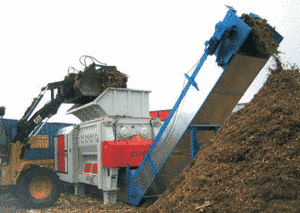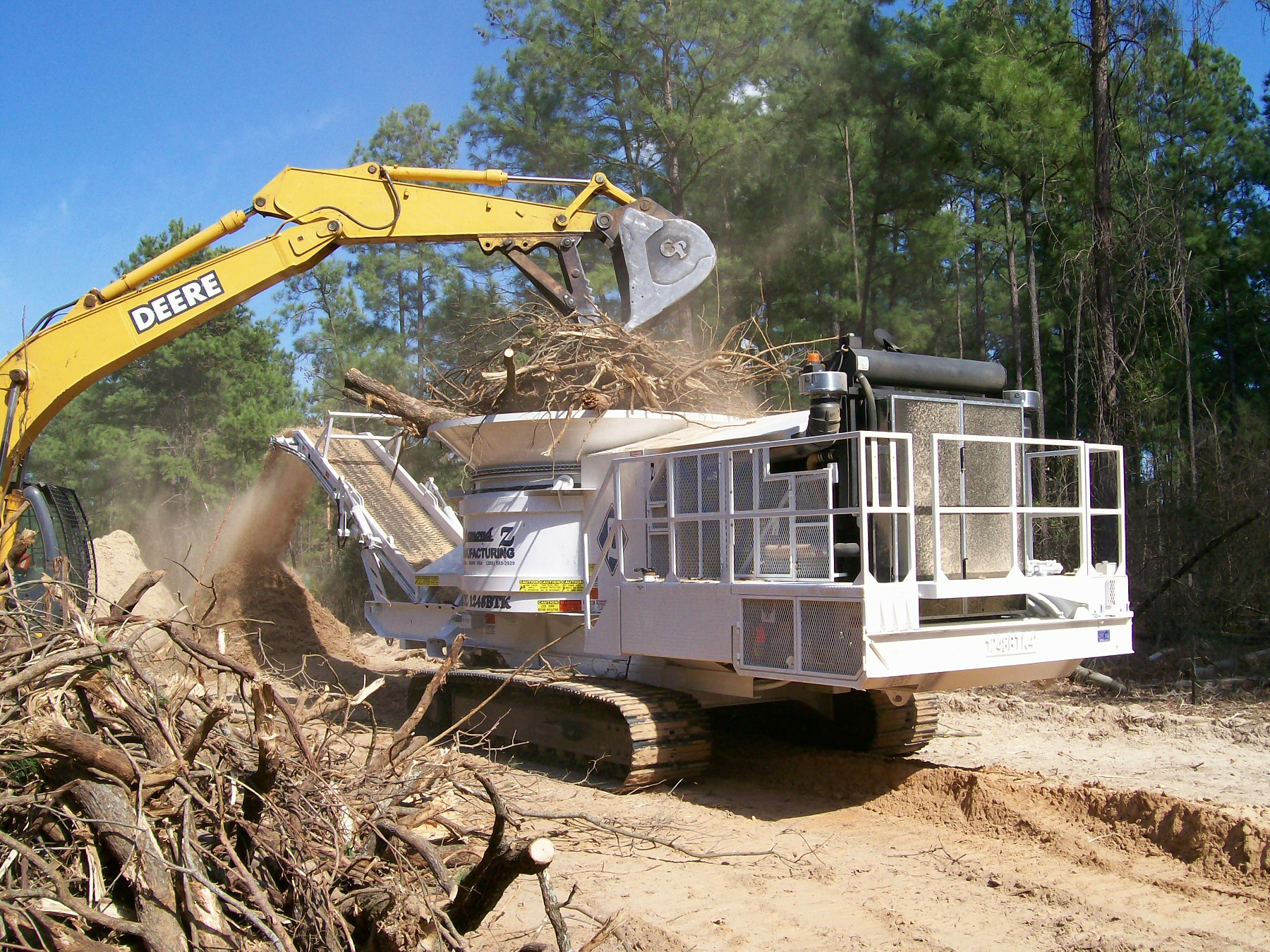Effective Timber Handling Starts Below: Unlock the Potential of Wood Grinders
Enhance Recycling Initiatives With Powerful Wood Grinders: the Trick to Effective Waste Monitoring
Reliable waste administration is a pushing problem in today's society, and boosting recycling initiatives is an essential aspect of sustainable waste decrease (wood grinders). One powerful device that plays a considerable function in this undertaking is the wood mill. These devices supply a way to successfully refine wood waste, changing it into beneficial resources. The benefits of wood mills prolong beyond recycling efficiency, as they additionally contribute to ecological preservation and price savings. To fully recognize the potential of these effective devices in waste monitoring, it is important to discover their relevance, features, and ideal practices for integrating them right into recycling programs. By doing so, we can discover the key to reliable waste administration and its favorable effect on our setting and communities.
The Importance of Wood Grinders in Waste Monitoring
Wood grinders play an essential role in waste management by efficiently decreasing the quantity of timber waste and promoting its correct disposal. Timber waste, such as branches, pallets, and logs, can take up valuable space in landfills and add to ecological air pollution otherwise handled appropriately. Wood grinders are particularly developed to damage down large pieces of wood into smaller, a lot more convenient sizes, making it simpler to transport and get rid of of the waste.
One of the vital benefits of wood grinders is their ability to lower the quantity of wood waste. By damaging down big pieces of wood right into smaller particles, timber grinders can substantially decrease the quantity of area required for storage and disposal. This not just helps to maximize land use yet additionally minimizes transportation prices connected with hauling cumbersome wood waste.
In addition, wood mills facilitate the appropriate disposal of timber waste. The processed wood waste can be successfully reused or repurposed for various applications such as compost, biomass fuel, or animal bed linens. By transforming timber waste into important sources, wood grinders add to the round economic climate and advertise sustainable waste administration practices.
Exactly How Timber Grinders Improve Recycling Effectiveness
Timber grinders play a crucial function in improving reusing effectiveness by changing large wood waste right into beneficial resources. These powerful devices are made to effectively damage down large items of timber right into smaller, more workable sizes, enabling easier processing and recycling. By reducing the size of the timber waste, timber mills make it possible for efficient transportation and storage, inevitably saving time, room, and resources.
One of the main benefits of wood grinders is their capacity to transform timber waste right into valuable items such as compost, biomass, or compost fuel. With the grinding process, the wood waste is transformed right into a penalty, consistent material that can be utilized in various applications. Compost can be utilized for landscaping purposes, garden compost can improve dirt and promote plant growth, and biomass fuel can be used to create warmth and electrical power.
In addition, timber grinders help to reduce the ecological influence of timber waste by diverting it from land fills. By reusing timber waste, it lessens the need for brand-new basic materials, saves energy, and reduces greenhouse gas emissions connected with the manufacturing and disposal of timber items.

Advantages of Making Use Of Powerful Timber Grinders for Waste Decrease
Making use of effective wood grinders for waste decrease supplies countless advantages in terms of efficiency and sustainability. These machines are designed to properly and efficiently grind timber waste right into smaller, more convenient pieces, decreasing the quantity of waste produced. One of the key advantages is the substantial reduction in landfill room needed for wood waste disposal. By grinding the waste, it can be compacted more quickly, permitting for much more efficient usage of garbage dump area.
In addition, powerful timber grinders add to the sustainability of waste management initiatives. The ground timber waste can be repurposed and made use of in different sectors, such as biomass energy manufacturing, pet bed linen, or compost production. This creates a round economy where waste products are reused and reused, minimizing the need for brand-new raw materials and reducing ecological impact.
Moreover, making use of wood mills for waste reduction can likewise improve work environment safety. By grinding wood waste, the threat of unintentional injuries from taking care of cumbersome and big items of waste is substantially lowered. The grinders are geared up with security attributes to ensure the security of drivers and stop crashes.
Key Features to Take Into Consideration When Picking a Wood Grinder

One vital function to take into consideration is the power of the mill. Higher horsepower permits the machine to procedure larger volumes of timber waste promptly and efficiently. Additionally, an effective motor guarantees that the mill can manage challenging materials and maintain consistent performance over prolonged periods.
An additional key function to look for is the size and style of the grinding chamber. A larger chamber enables for even more timber waste to be processed at the same time, minimizing downtime for clearing and boosting total performance. Furthermore, a well-designed chamber with purposefully put cutting systems makes sure uniform grinding and reduces the danger of blockages or jams.
Effective waste management requires a timber mill with robust cutting mechanisms. Look for mills furnished with sharp, long lasting blades or hammers that can successfully shred and procedure the wood waste. Additionally, some mills use adjustable settings, permitting operators to personalize the size and uniformity of the outcome material.
Ease of upkeep is additionally an essential consideration. Look for mills that provide easy accessibility to the grinding chamber and cutting mechanisms, enabling quick and convenient cleaning and blade substitute. This makes sure minimal downtime and optimizes the grinder's overall life expectancy.
Best Practices for Incorporating Wood Grinders in Recycling Programs
In order to effectively include wood mills into reusing programs, it is necessary to carry out best techniques that maximize their use and optimize waste reduction initiatives. One essential finest practice is to effectively browse around here maintain and service the timber mills often. This consists of routine assessments and cleaning to make certain that the equipment remains in optimum condition and operating successfully. By keeping the grinders properly maintained, the risk of malfunctions and downtime is decreased, permitting undisturbed recycling procedures.
One more ideal technique is to educate recycling program staff on the appropriate operation and maintenance of the wood mills. This includes enlightening them on safety and security methods, such as wearing appropriate protective gear and complying with appropriate operating procedures. Furthermore, personnel must be educated on just how to recognize and promptly address any concerns that might arise during the grinding procedure.
It is also important to develop try this website an extensive waste management plan that incorporates using timber mills. This consists of recognizing the kinds and quantities of wood waste that will certainly be refined, along with developing effective workflows and timetables for grinding procedures. By meticulously preparing and organizing the recycling program around the use of wood mills, the general waste reduction efforts can be made best use of.
Last but not least, it is critical to consistently assess the efficiency and keep an eye on of the wood mills in the reusing program. This can be done by tracking essential metrics such as the quantity of wood waste refined, the effectiveness of the grinding process, and the total reduction in waste quantity. By constantly keeping track of and evaluating these metrics, any kind of necessary changes or enhancements can be recognized and carried out to further maximize the wood grinding procedure and improve the total efficiency of the reusing program.
Conclusion
To conclude, powerful timber mills play a crucial duty in improving reusing efforts and efficient waste management. By boosting recycling effectiveness and minimizing waste, wood grinders add to a more lasting and environmentally friendly method to throw away disposal. When choosing a wood mill, considering crucial attributes and incorporating best methods can better optimize recycling programs. On the whole, utilizing wood mills is important for attaining successful waste reduction and promoting a greener future.
Timber grinders play a critical role in waste management by effectively decreasing the volume of wood waste and promoting its proper disposal.Additionally, wood mills assist in the correct disposal of timber waste. By changing timber waste right into useful resources, wood grinders contribute to the circular economic situation and advertise lasting waste monitoring techniques.
Timber mills play a critical role in boosting recycling effectiveness by changing large timber waste right into beneficial sources (wood grinders). Get More Information By lowering the dimension of the wood waste, wood mills allow effective transportation and storage space, eventually saving time, space, and sources